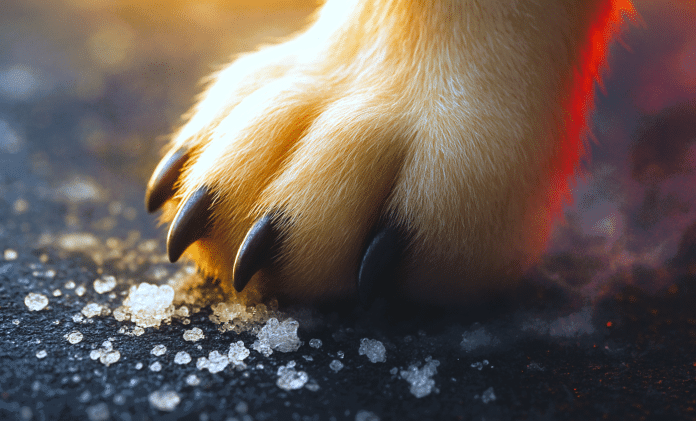Pensacola, FL – With first frost warnings and the potential for early-morning ice in the forecast, veterinarians are reminding Florida Panhandle pet owners to stay alert for hidden winter hazards. While snow is rare along the Gulf Coast, road salt and de-icing chemicals used during cold snaps can still burn paws, irritate skin, and cause toxic reactions if pets lick or ingest them.
Even limited use of salt and chemical treatments can pose a risk. Common ice-melt products—made from sodium chloride, calcium chloride, or magnesium chloride—break down thin ice quickly but can irritate paw pads and cause small cuts or cracks. When dogs lick their paws after walks, they can swallow these substances, leading to vomiting, diarrhea, excessive thirst, or lethargy. In serious cases, salt poisoning can cause seizures or kidney damage.
Veterinarians note that pets in warmer climates may be more vulnerable because their paws aren’t conditioned for salt or prolonged cold exposure. Some de-icing products also contain industrial additives or heavy metals, making ingestion even more dangerous.
To keep pets safe, veterinarians recommend rinsing a dog’s paws with warm water after every walk and drying them completely. Applying a protective paw balm or wax before heading outside can help create a barrier, while trimming fur between the toes prevents buildup of frost or salt. Booties can provide added protection for dogs that tolerate them. Homeowners are encouraged to use pet-safe, chloride-free ice melts around driveways and porches.
With temperatures expected to dip into the 20s and low 30s in some inland areas, frost and light ice could form before sunrise. Veterinarians advise keeping outdoor time brief during the coldest hours and checking paws for irritation afterward.
As the Florida Panhandle faces its first frost of the season, experts remind owners that even in the Deep South, the biggest danger to pets this time of year may not be the chill—but the chemicals spread to prevent it.





